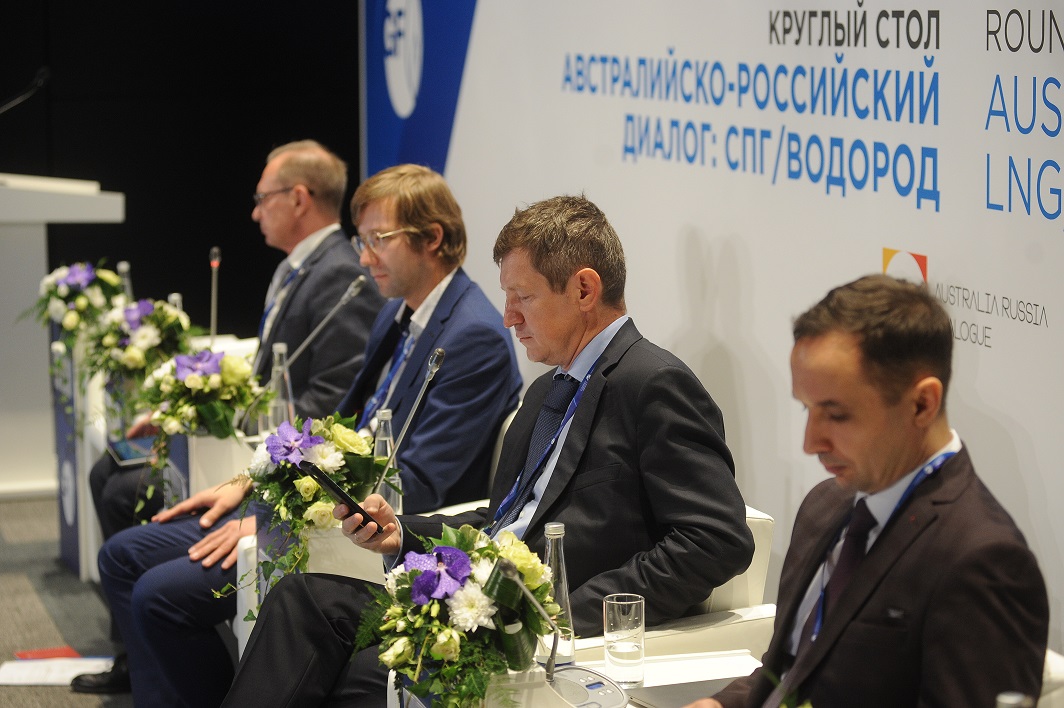
The countries are competing for LNG export to China.
Participants of the round-table discussion Australia-Russia LNG / Hydrogen Dialogue discussed prospects of collaboration in the liquefied natural gas (LNG) market. Since 2018, Australia has been the major LNG exporter in the world.
George Gilboy, Vice President of Woodside Energy, the largest Australian energy company, was asked why his company didn’t invest into Russian LNG initiatives and how it could be engaged into the sector. Mr. Gilboy explained that Woodside Energy hadn’t collaborated with Russia before but things could change in the nearest perspective.
At the same time, Australian investments in the Russian LNG market could help balancing the influence of China – our major investor – on the Arctic region, says Sergey Kapitonov, Gas Analyst from SKOLKOVO Energy Centre. According to Alexander Klimentyev, Principal Advisor in the Directorate of Investment and Innovation Policy at the Permanent Mission of Republic of Sakha (Yakutia), Australia and Russia seem to be competing for LNG export to China.
Meanwhile, Australia takes on natural gas use for hydrogen production. This state invests $26 billion to alternative energy sources and decarbonization, tipped off Peter Moore, Associate Professor from the Curtin University. In 2019, citizens of Perth, the city with major gas fields, arranged a protest and demanded that the state switched to renewable energy sources. Besides, high CO2 emission taxes imposed globally stimulated the Australian state to think about energy decarbonization.
“We won’t be able to do overseas transportation unless we reduce our carbon footprint – the eco dues will be too high,” Peter Moore explains. Australia expects reaching zero carbon footprint by 2050, and for that they are going to switch their marine to liquefied fuel.
Moreover, the state will invest into the carbon capture and storage technology to produce the most pure and blue hydrogen. According to Mr. Moore, the Australian state has assigned a mission of reducing the price of pure hydrogen to 2 AUD per 1 kg by 2030.
Russia is also working on some carbon capture and storage initiatives, but hydrogen production by means of natural gas pyrolysis currently prevails. As put by Vladimir Voronov, Associate Professor, Faculty of Low-Temperature Energy, ITMO University, hydrogen produced by either of the technologies has the same price of $2 to 3,5 per 1 kg. Today, these are the most profitable production methods.
According to the Russian State Energy Strategy, by 2024 export of Russian-made hydrogen must reach 0.25 mln tons, and by 2035 – 2 mln tons. As for now, speaking of hydrogen energy is a little bit too ambitious. Mr. Voronov believes that major state grant support is required for hydrogen to get into the market and expects that Russia will prefer liquefied natural gas in the nearest perspective.
An interesting fact was presented by Alexander Klimentyev, who announced that LNG production in the Arctic Region has the lowest carbon footprint in the world, which is 0.1 tons CO2 per 1 ton LNG. At the same time, Australian facilities feature one of the top emission rates in the world, coming to 0.5 tons CO2 per 1 ton LNG.